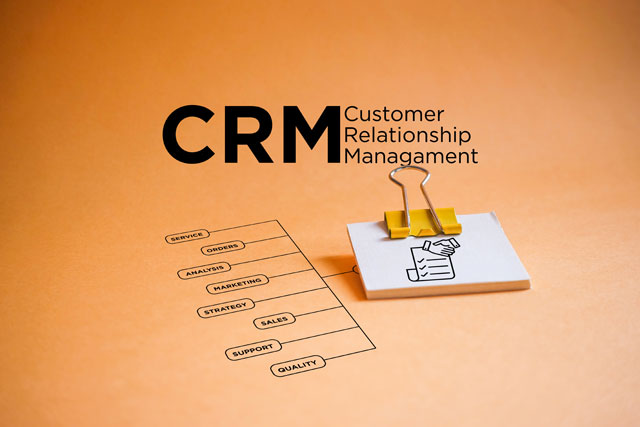Trends in Online Marketing
Increased use of social networks such as LinkedIn and Twitter is among the top trends for 2010 in small businesses. In times of economic stress, people generally become more closely knit together through their social acquaintances and networks. As a new business, it is in your best interest to be networked in the online world or at least have a page presence in most of the popular places.
Another popular marketing trend on the rise is big businesses use of online or virtual applications that have been traditionally operated in desktop applications. Your business information is on someone else's server. The application used exists only online or on that client's server. Although it is intended to increase information exchange between companies, the practice still has some flaws inherent in the online forum used. One of the main applications being transformed is QuickBooks, which will be a virtual type of application. QuickBooks represents the Holy Grail of businesses in so far as companies generally do not trust their financial information to just anyone, or rather in fact, no one.
Webinars
Webinars are simply seminars online. Upcoming and growing in popularity, webinars are soon to compete with eBooks and other sources of quick online information. In some ways, eBooks and webinars compliment each other in that the eBook can give a physical presence to the online seminar's content.
Most often when a seminar attendant completes the course or seminar, they walk away with good notes and new knowledge. The eBook is the natural complimentary product for the webinar as it helps the student participant to reference and remember the content of the seminar.
Presently, the market for webinars is growing and is only at a 1% saturation rate, which means 99% of the online audience has never seen a webinar. Webinars are terrific for educators and can be easily utilized for professional and educational training.
Generally, webinars can be pre-recorded or conducted "live" with participants interacting with the instructor. The pre-recorded mode is often used for teaching material that is fairly factual. The "live" webinar is better suited for a learning environment in which the student/teacher interaction enhances what is taught.
In the professional world, gurus generally use pre-recorded webinars designed to pass on specialized information. Corporate trainers usually utilize an interactive "live" event to insure that everyone is "on the same page".
Subscriptions and Other Exclusive Information
Exclusive information and subscriptions still have a robust role in online marketing for businesses. Hard-to-get information often sells via eBooks at a premium price [$97 to $497] per copy. Subscriptions and newsletters are still a great way to stay in touch with your client base or increase your sales through repetition and relationship building. Most subscriptions are marketed via email marketing systems such as Constant Contact, a similar pay-by-the-month platform which makes them very feasible for new businesses.
eBook marketing for your business, on the other hand, is frequently handled through a stand alone squeeze/sales page or on an instant access page in someone's bookstore. The stand alone version is marketed separate from your business and really does not directly enhance it even if your buyers eventually find their way to your website through content links, etc. In both instances your clients feel an increased sense of relationship with you and this never hurts your business, especially in a cold and detached world such as online marketing.
Social Networks and Viral Selling
Viral selling IS the real value of social networks. Many independent business people, entrepreneurs and up-and-coming businesses start their online marketing by first tapping into their social networks. Posting links to every social network and site you can think of is the viral way to sell online.
Viral selling through your social networks [i.e. Facebook, LinkedIn, etc.] generally takes quite a bit longer, but you build solid business relationships as you invest that effort and time. Your online presence and availability also builds confidence in your prospective clients. You're clearly not hiding under the rocks so you must have a certain level of integrity. Don't exploit that assumption; it's best to let it work for you.
Research
|
Media |
Frequency of Advertising |
$Invested/ Cost of Adv |
Client Acquisition |
$Per New Client |
Estimated Increase To Co. |
|
Direct Mail |
Quarterly |
$445 |
20 New clients |
$22.25 |
4% |
|
TV/Radio Ads |
Monthly |
$1500 |
80 New clients |
$18.75 |
5.5% |
*$Per New Client is an estimate of what it costs to acquire a new client using these advertising sources.
eMarketing
electronic form.
Site Ads
AdSense, is a system available through Google in which you can have your site receive paid advertisements. You can also turn the money from those paid advertisements on your site(s) into the account and purchase ads for your company on other sites in the internet.
A similar site is Text-Link-Ads which posts text and link advertisements on your site(s) to help promote your company. This system also exploits the inherent system of links from the advertisers to your site and all the links that are associated by sheer presence on numerous sites.
Opt-In Ads
Some of the marketing and advertising companies online give their clients an opt-in so that when you receive site clicks from their advertisement. One such company is iWeb Marketing which packages their ads into software that is sold to various business owners. These business owners have selected the type of advertisement(s) they are interested to see at the time they purchase the software. When the business owner opens the software, your advertisement and links take them directly to the page you designate in the iWeb system.
This type of advertising is also known as target marketing because you, the paying advertiser, select the types of clients you want them to advertise to. When your type of client also selects your type of business as one he wants to see ads on, then you have reached a much targeted market in which both parties already want to talk with one another. Opt-In ads are some of the most cost effective advertisements to purchase on the web with the average cost to your company running $150 for 100,000 targeted hits to your site.
Pay-Per-Click
the net do not know that and even those who do could care less about whether they trash your advertising budget. This type of advertising is a great revenue source for the search engine, but not such a good deal for most start up businesses.
Radio Advertising For Your Business
Radio ads for your business can be purchased for extremely affordable rates these days. According toradio spots can run as low as $400 per spot with 118 host endorsement stations with their company. Using this reference as a basis for rough estimate, your company can start with 20 spots per month and still come in under $100,000 for your annual advertising budget.
Spot Runner boasts as the catalyst for revolutionizing the price structures in both radio and television advertising. In the last few years they have added internet advertising to their offerings and they are, in fact, leveling the advertising playing field between large corporations and smaller businesses.
Television Advertising For Your Business
According to Spot Runner's detail page on television advertising 13 weeks of television ads can run as little as $20,000. Their recommended budget set aside is 4% of your company's annual revenue, which is pretty standard for marketing budget considerations. This figure translates to a half-million dollars in annual revenue supports their beginning ad program. For new and up-and-coming businesses, a half-million dollars in annual revenue can be attained in the first few years making it possible for you to launch into the bigger waters that television and radio advertising can bring.
Direct Voice Broadcasting
Direct voice broadcasting is the newest in upcoming marketing technology. Growing popularity with both the community and business sectors, voice broadcasting helps companies reach thousands of people instantly through your company's voice system.
Think of it as mass voice mail and you have a picture of voice broadcasting. While this system is not a top replacement for your sales and marketing staff, it is a helpful tool for managing appointments and product delivery. When your clients have an appointment with your company, you can use the system to call to remind them of an upcoming date with your staff. When prepaid or ordered product arrives in your warehouse or system, the broadcasting system can call the client(s) and announce their arrival.
A note about using voice broadcasting for direct marketing: not suggested for cold calling. In other words, you should not try to use this system to replace your direct sales staff or those who make outbound cold calls. Congress has essentially outlawed cold calling through various legislation. As of September 2009, a new federal law went into effect prohibiting the use of these systems for cold calls . However, there is a substantial use for voice broadcasting systems in the context of your customer relations management.
If you use voice broadcasting system and you are operating any business other than a church, bank or insurance company, be sure to collect an explicitly written opt-in permission from each person on your call list. This keeps you in compliance with federal laws. Car dealers, home builders and other businesses accomplish this by having the client fill out a request for contact form that gives them permission to call you. Take note that you do not make an opt-in form that hides what the client is agreeing to [no fine print]. The law requires the opt-in to be explicit, clear and well understood.
If you are a business that wants to solicit business from other businesses [B2B], then you are perfectly safe to use the voice broadcast system for sales solicitation. The federal laws are designed to protect residential clients, but businesses are open for solicitation without opt-in measures. For Business-to-Business solicitations, the investment in voice broadcasting is probably worth the cost if this is the meat and potatoes of your business.
According to Easy IVR, you can set up voice broadcasting through their services for as little as $125 set up, $25 per month and $0.15 per number in the call system. That is a very reasonable price for soliciting B2B contracts. Alternatively, you can purchase a 4-line system from them that handles up to 200 calls per hour for $7,000. The system has an internal Do-Not-Call system with an opt-out at the beginning and end of the call. Again, not a bad price when measured against hiring paid staff to sit and make calls to other businesses.





























